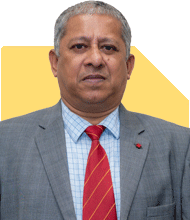Ulhas Joshi | Answer |Ask -Follow
Mutual Fund Expert - Answered on Jul 02, 2024
Prior to joining RankMF as CEO, he was vice president (sales) at IDBI Asset Management Ltd.
Joshi holds an MBA in marketing from Barkatullah University, Bhopal.... more

Hi Sir , Iam 26 years old and currently having salary of around 1LAC per month having term plan of self, health insurance of self and parents and ppf and nps savings. Iam planning investment in mutual funds with a amount of 25000 every month in each of small mid and large. Please suggest me a better approach to distribute between them and kindly suggest me funds as well sir I'm a beginner with less experience in this MF.
Investing in such funds will ensure that you have adequate exposure across market capitalisations.
You may like to see similar questions and answers below
Omkeshwar Singh | Answer |Ask -Follow
Head, Rank MF - Answered on Jun 08, 2021
Ramalingam Kalirajan |9255 Answers |Ask -Follow
Mutual Funds, Financial Planning Expert - Answered on May 06, 2024
Ramalingam Kalirajan |9255 Answers |Ask -Follow
Mutual Funds, Financial Planning Expert - Answered on May 04, 2024
Ramalingam Kalirajan |9255 Answers |Ask -Follow
Mutual Funds, Financial Planning Expert - Answered on May 26, 2024
Milind Vadjikar | Answer |Ask -Follow
Insurance, Stocks, MF, PF Expert - Answered on Sep 29, 2024
Radheshyam Zanwar |4281 Answers |Ask -Follow
MHT-CET, IIT-JEE, NEET-UG Expert - Answered on Jun 28, 2025
Radheshyam Zanwar |4281 Answers |Ask -Follow
MHT-CET, IIT-JEE, NEET-UG Expert - Answered on Jun 28, 2025
Radheshyam Zanwar |4281 Answers |Ask -Follow
MHT-CET, IIT-JEE, NEET-UG Expert - Answered on Jun 28, 2025
Radheshyam Zanwar |4281 Answers |Ask -Follow
MHT-CET, IIT-JEE, NEET-UG Expert - Answered on Jun 28, 2025
Radheshyam Zanwar |4281 Answers |Ask -Follow
MHT-CET, IIT-JEE, NEET-UG Expert - Answered on Jun 28, 2025
Prof Suvasish Mukhopadhyay |1866 Answers |Ask -Follow
Career Counsellor - Answered on Jun 28, 2025
Radheshyam Zanwar |4281 Answers |Ask -Follow
MHT-CET, IIT-JEE, NEET-UG Expert - Answered on Jun 28, 2025
Radheshyam Zanwar |4281 Answers |Ask -Follow
MHT-CET, IIT-JEE, NEET-UG Expert - Answered on Jun 28, 2025
Radheshyam Zanwar |4281 Answers |Ask -Follow
MHT-CET, IIT-JEE, NEET-UG Expert - Answered on Jun 28, 2025
Radheshyam Zanwar |4281 Answers |Ask -Follow
MHT-CET, IIT-JEE, NEET-UG Expert - Answered on Jun 28, 2025























